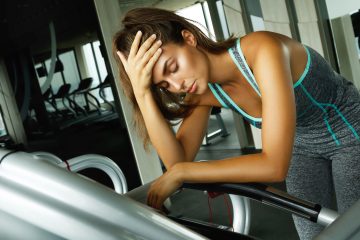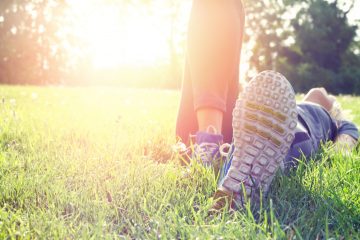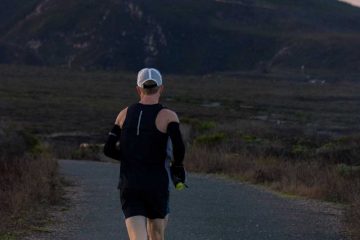Athlete Thermoregulation: Tips for Keeping Cool When It’s Hot
Thermoregulation is the ability of an organism
to maintain a body temperature within certain boundaries, even when the
surrounding temperature is very different. Basically, this refers to your ability
to stay warm in cool environments, and cool in hot environments. A
physiological example of thermoregulation is sweating.
to maintain a body temperature within certain boundaries, even when the
surrounding temperature is very different. Basically, this refers to your ability
to stay warm in cool environments, and cool in hot environments. A
physiological example of thermoregulation is sweating.
The concept of thermoregulation is important to
endurance athletes because it directly correlates to performance. The inability
to control temperature swings results in a decrease in performance, and can put
an end to your race day altogether. This decrease in performance is hardly
negligible, just look at the following statistics from a study on marathon
times.
endurance athletes because it directly correlates to performance. The inability
to control temperature swings results in a decrease in performance, and can put
an end to your race day altogether. This decrease in performance is hardly
negligible, just look at the following statistics from a study on marathon
times.
- In elite pro runners, for every 5 degrees over 41
degrees Fahrenheit, times slow by 0.4%. On a 77 degree day, an elite
pro will expect to run 5% slower than on a 41 degree day. - The rate of slowing increases with slower run times.
For example, in this study, they found that a 3 hour marathoner will be
around 12% slower on a 77 degree day compared to a 41 degree day. This
brings their finish time from 3 hours flat to 3 hours 21 minutes.
Fortunately, there are small steps we can take
to battle the performance deficits that come with hot temperatures. Here are four
of the most effective methods for avoiding over-heating during training and
racing.
to battle the performance deficits that come with hot temperatures. Here are four
of the most effective methods for avoiding over-heating during training and
racing.
Hydration
Hydration is your first line of defense in
thermoregulation. Although on the surface hydration seems simple, how you
hydrate and what you hydrate with can actually have a big impact on
thermoregulation and hydration status.
thermoregulation. Although on the surface hydration seems simple, how you
hydrate and what you hydrate with can actually have a big impact on
thermoregulation and hydration status.
Laboratory based tests conclude that
hyperhydration is an effective strategy for maintaining a slightly lower body
temperature during endurance exercise in hot temperatures. Hyperhydration, put
simply, is preventatively taking in fluids, or drinking when you are not
thirsty. This effect seems to be due to a faster onset of sweating and improved
“sweating efficiency”. For shorter races (1-3 hours), hyperhydration
does appear to be an appropriate strategy on a hot day. Exactly how effective
this strategy is in improving performance is yet to be determined at these
distances, but theoretically benefits do exist, as research definitely shows
improved thermoregulation through hyperhydration.
hyperhydration is an effective strategy for maintaining a slightly lower body
temperature during endurance exercise in hot temperatures. Hyperhydration, put
simply, is preventatively taking in fluids, or drinking when you are not
thirsty. This effect seems to be due to a faster onset of sweating and improved
“sweating efficiency”. For shorter races (1-3 hours), hyperhydration
does appear to be an appropriate strategy on a hot day. Exactly how effective
this strategy is in improving performance is yet to be determined at these
distances, but theoretically benefits do exist, as research definitely shows
improved thermoregulation through hyperhydration.
One way to enhance hyperhydration without having
to chug down as many bottles of water is to nutritionally optimize
intracellular fluid uptake. One supplement that aids this is glycerol, yep that evil alcohol sugar. Before undertaking glycerol supplementation for hyperhydration, be sure to do your research, or better, work with a professional that knows what they are doing. Done right, you win. Done wrong, you lose. In addition, during exercise,
plain water is fairly poorly absorbed in the intestines. Including
carbohydrates in a fluid replacement drink is crucial for optimal fluid
absorption in the intestines. In fact, research shows that combining a
carbohydrate with water during exercise improves intestinal fluid absorption up to
six times!
to chug down as many bottles of water is to nutritionally optimize
intracellular fluid uptake. One supplement that aids this is glycerol, yep that evil alcohol sugar. Before undertaking glycerol supplementation for hyperhydration, be sure to do your research, or better, work with a professional that knows what they are doing. Done right, you win. Done wrong, you lose. In addition, during exercise,
plain water is fairly poorly absorbed in the intestines. Including
carbohydrates in a fluid replacement drink is crucial for optimal fluid
absorption in the intestines. In fact, research shows that combining a
carbohydrate with water during exercise improves intestinal fluid absorption up to
six times!
Action Step: I recommend using a sports
drink as your primary hydration source always.
On exceptionally hot days, I recommend drinking 25 ml/kg body weight (175 lb
person will drink approximately three 21 oz bottles) of fluids prior to the
race. Make two of them water and one a sports drink. Be sure to use electrolyte tabs as
directed during the race to ensure adequate electrolyte levels.
drink as your primary hydration source always.
On exceptionally hot days, I recommend drinking 25 ml/kg body weight (175 lb
person will drink approximately three 21 oz bottles) of fluids prior to the
race. Make two of them water and one a sports drink. Be sure to use electrolyte tabs as
directed during the race to ensure adequate electrolyte levels.
Water
Dousing
Dousing
There is not much science to be found on the
effect of water dousing on core temperature during exercise, however anecdotal
“evidence” strongly supports frequent water dousing during a race in
the heat. Fortunately, many races in hot environments now provide sponges and
cups of ice for dousing.
effect of water dousing on core temperature during exercise, however anecdotal
“evidence” strongly supports frequent water dousing during a race in
the heat. Fortunately, many races in hot environments now provide sponges and
cups of ice for dousing.
Action: At each aid station be sure to douse yourself
with water and/or ice/sponges. This is typically only needed during running, as
the wind during biking is typically enough to evaporate sweat quickly.
with water and/or ice/sponges. This is typically only needed during running, as
the wind during biking is typically enough to evaporate sweat quickly.
Clothing
Choices
Choices
Your choice of clothing impacts thermoregulation.
Sweating is the body’s natural cooling method. However, in order for sweating
to be effective, the sweat must evaporate. It is the evaporation of sweat that
cools the body. The ideal clothes for training and racing in hot weather allow
for air to flow through them. On sunny days, protecting the skin from the sun
is beneficial to staying cooler. Sunscreen can interrupt both sweat production
and evaporation. Although dark colors do absorb more heat when the sun is out,
in a short race this is unlikely to result in hotter core temperatures.
However, in a long race, opting for the lighter color is likely the wiser
decision. On sunny days, wearing a visor to protect from the sun and save on
sunscreen use is the wiser choice.
Sweating is the body’s natural cooling method. However, in order for sweating
to be effective, the sweat must evaporate. It is the evaporation of sweat that
cools the body. The ideal clothes for training and racing in hot weather allow
for air to flow through them. On sunny days, protecting the skin from the sun
is beneficial to staying cooler. Sunscreen can interrupt both sweat production
and evaporation. Although dark colors do absorb more heat when the sun is out,
in a short race this is unlikely to result in hotter core temperatures.
However, in a long race, opting for the lighter color is likely the wiser
decision. On sunny days, wearing a visor to protect from the sun and save on
sunscreen use is the wiser choice.
Action: In a running race, wear light, loose clothing.
If the sun is out in force, choose light colors. In a triathlon or cycling
race, choose a kit made of breathable material. Choose coverage with the light apparel over sunscreen for most of your body.
If the sun is out in force, choose light colors. In a triathlon or cycling
race, choose a kit made of breathable material. Choose coverage with the light apparel over sunscreen for most of your body.
Pre-Cooling
On hot days, pre-cooling appears to mildly
improve performance in endurance races. For long and ultra races (Ironman,
70.3) this may not provide much performance enhancement. However, in shorter
duration races (marathons, half marathons, 10K’s, 5K’s, sprint tri’s, and
olympic tri’s), pre-cooling appears to benefit performance and thermoregulation
on hot days. Pre-cooling may include staying cool in the water prior to a
triathlon (if chilly), wearing a cooling vest during your warm up (www.stacoolvest.com), or sitting
in a cool environment. Basically, be chilled just prior to the race. But don’t
neglect an appropriate muscle warm up.
improve performance in endurance races. For long and ultra races (Ironman,
70.3) this may not provide much performance enhancement. However, in shorter
duration races (marathons, half marathons, 10K’s, 5K’s, sprint tri’s, and
olympic tri’s), pre-cooling appears to benefit performance and thermoregulation
on hot days. Pre-cooling may include staying cool in the water prior to a
triathlon (if chilly), wearing a cooling vest during your warm up (www.stacoolvest.com), or sitting
in a cool environment. Basically, be chilled just prior to the race. But don’t
neglect an appropriate muscle warm up.
Action Step: Either
perform your pre-race warm up in a cooling vest, or perform your pre-race warm
up, then find a cool environment to sit in and get chilled (air conditioned car, water for a triathlon, or building close by). Being you’ll be sweating, the cool air will evaporate
the sweat well and result in rapid cooling.
perform your pre-race warm up in a cooling vest, or perform your pre-race warm
up, then find a cool environment to sit in and get chilled (air conditioned car, water for a triathlon, or building close by). Being you’ll be sweating, the cool air will evaporate
the sweat well and result in rapid cooling.
Questions? Contact us at [email protected]. You can also shop our Panels at: http://www.athletebloodtest.com/our-test-panels/
Michael N. Sawka; Lisa R. Leon; Scott J. Montain; Larry A. Sonna
Integrated physiological mechanisms of exercise performance, adaptation, and maladaptation to heat stress
Comprehensive Physiology 2011;1(4):1883-1928.
Eur J Appl Physiol Occup Physiol. 1987;56(5):603-7.
Thermoregulation in hyperhydrated men during physical exercise.
Grucza R, Szczypaczewska M, Kozłowski S.
Source
Department of Applied Physiology, Polish Academy of Sciences, Warsaw.
Br J Sports Med. 2006 April; 40(4): 320–325.
doi: 10.1136/bjsm.2005.022426




0 Comments